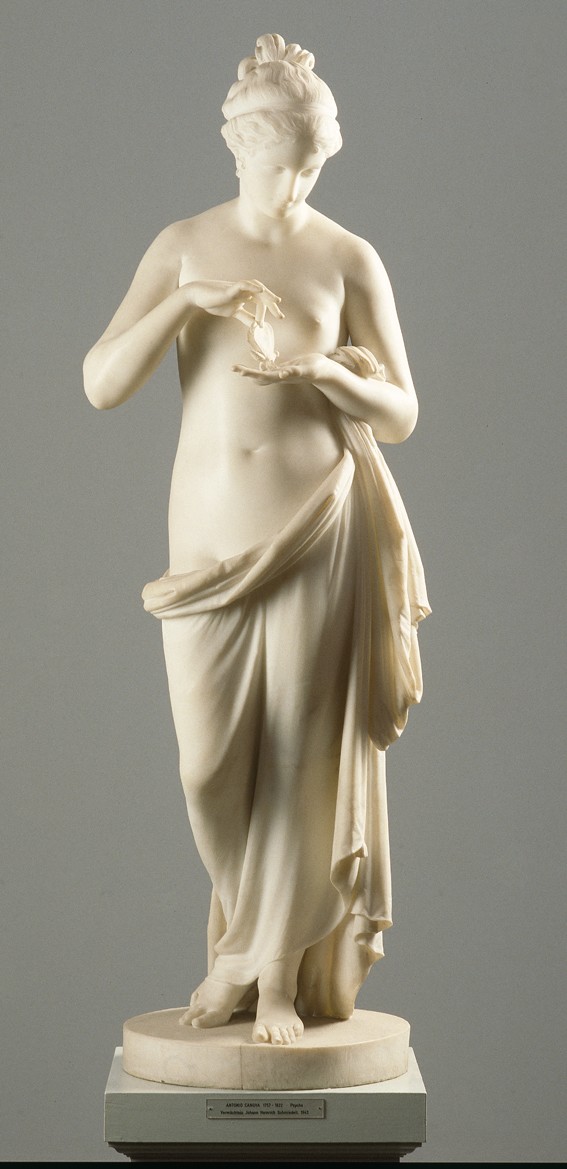Taking as his inspiration the Late Antique text Asinus aureus (The Golden Ass) by Apuleius, Antonio Canova, the outstanding sculptor of Italian Neoclassicism, interpreted the theme of Cupid and Psyche several times. The satirical romance tells of Psyche, the mortal daughter of a king, who reveres Cupid, the god of love. Psyche ascends to Cupid at Olympus only after a painful ordeal, however. Whereas Psyche had been portrayed as a winged being until well into the 16th century, Canova shows her as a young girl, half nude, tenderly holding a butterfly in her hand. In its transformation from a caterpillar to a flying insect, it symbolizes the relationship between body and soul. Unlike Canova’s later works, the individual Bremen figure merely suggests the presence of Cupid. Though Psyche’s intense preoccupation with the butterfly initially gives the sculpture a playful appearance, the space outlined by the hands and breasts that at the same time encloses the butterfly enables the personification of Psyche’s soul to contemplate her love for Cupid. The spiritualization of this seemingly so innocent scene underlines the extent that Neoclassical sculpture appeals both to the senses and to the intellect.
de

